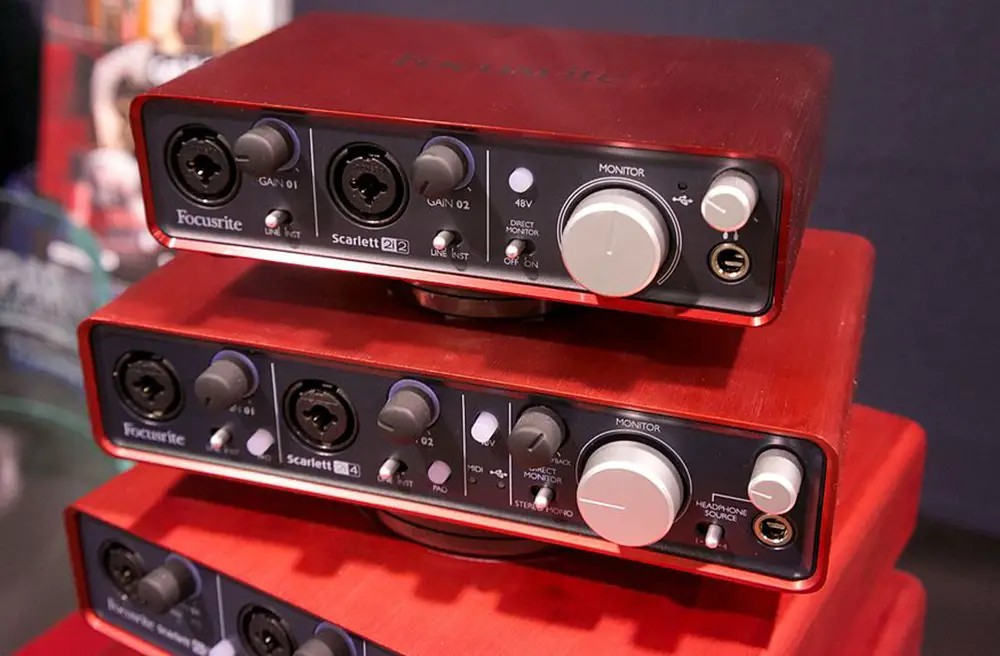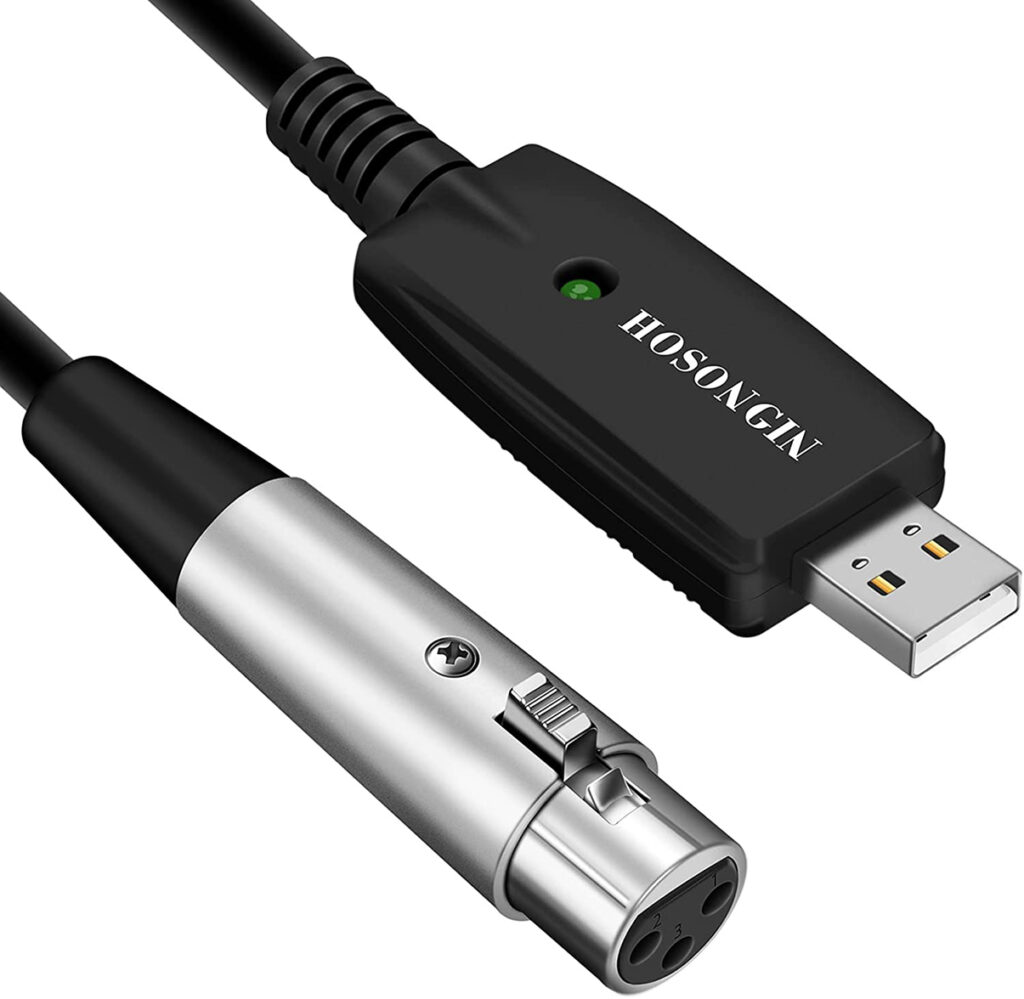The world of audio recording has evolved significantly with the advancement of digital technology, creating new opportunities for musicians, podcasters, and content creators to capture high-quality sound with greater ease and affordability.
One aspect of this evolution is the ability to convert XLR microphone connections to USB, enabling seamless integration with a wide range of devices and simplifying the recording process. Let me be a little more concise:
Can You Connect an XLR Mic To USB?
An XLR microphone can be connected to a USB port using an XLR-to-USB adapter, audio interface, or XLR-to-USB cable. These devices convert the analog audio signal from the microphone into a digital signal compatible with USB devices. The sound quality and functionality depend on the quality of the components used in the conversion process.
This article will explore the benefits and drawbacks of converting XLR to USB, discussing factors such as sound quality, compatibility, and control, as well as providing guidance on when to opt for an XLR-to-USB solution versus a dedicated audio interface. By understanding these key considerations, you, the user, can make informed decisions to optimize your audio recording experience.

Can You Connect XLR Mic To USB?
You can connect an XLR microphone to a USB port on your computer or another USB-compatible device. However, you will need an XLR-to-USB adapter or audio interface to make this connection.
These devices convert the analog audio signal from the XLR microphone into a digital signal that can be transmitted through a USB cable and recognized by your computer or device.
There are two primary options for connecting an XLR mic to USB:
- XLR-to-USB adapter: This is a simple device that connects directly to the XLR microphone on one end and to the USB port on your computer on the other end. The adapter has built-in electronics to convert the analog audio signal from the microphone to a digital signal for USB transmission.
- Audio interface: This is a more versatile option, as it typically offers multiple input and output options, including XLR inputs for microphones, 1/4-inch inputs for instruments, and various output options. An audio interface connects to your computer via USB or other digital connections and allows you to manage your audio recordings more efficiently.
Keep in mind that when using a condenser microphone, which requires phantom power, you’ll need to make sure your XLR-to-USB adapter or audio interface supports phantom power (usually 48V) to properly power the microphone.

Does XLR to USB affect sound quality?
Using an XLR-to-USB adapter or audio interface can have an impact on sound quality, but the extent of the impact depends on the quality of the components used in the adapter or interface, as well as the quality of the microphone itself.
There are a few factors that can influence sound quality when connecting an XLR microphone to USB:
Analog-to-digital conversion
The XLR-to-USB adapter or audio interface converts the analog audio signal from the microphone to a digital signal that can be transmitted via USB. The quality of this conversion process can affect the sound quality. Higher-quality adapters or interfaces usually have better analog-to-digital converters, which can result in more accurate and clearer audio.
Preamps
Some XLR-to-USB adapters and audio interfaces include built-in preamps. The quality of the preamp can have a significant impact on sound quality, as it amplifies the microphone’s signal before it is converted to digital. A good preamp will provide clean and accurate amplification, while a low-quality preamp may introduce noise or distortion.
Phantom power
If you’re using a condenser microphone that requires phantom power, the quality of the phantom power supply can also impact sound quality. A stable and clean phantom power supply is essential for the best performance of a condenser microphone.
In general, using an XLR-to-USB adapter or audio interface of good quality should not significantly degrade sound quality. However, for professional audio applications or situations where the highest audio quality is required, it’s generally better to use a high-quality audio interface with dedicated preamps and high-quality analog-to-digital converters. This will ensure the best possible sound quality when connecting an XLR microphone to a computer or other USB-compatible device.
Are their XLR to USB cables?
There are XLR-to-USB cables available. These cables have an XLR connector on one end for connecting to the microphone, and a USB connector on the other end for connecting to a computer or other USB-compatible device. Inside the cable, there is a small built-in analog-to-digital converter and, in some cases, a preamp.
It’s essential to note that these cables can vary in quality, and the built-in analog-to-digital converter and preamp may not offer the same level of performance as a dedicated audio interface or a separate XLR-to-USB adapter.
While an XLR-to-USB cable can be a convenient and affordable solution for casual recording or basic applications, if you require higher sound quality or more control over your audio, it’s usually better to invest in a good-quality audio interface.

What are the Advantages and Disadvantages of Converting XLR to USB?
Converting XLR to USB offers several benefits and drawbacks depending on the specific requirements of the user and the quality of the equipment used.
Benefits of converting XLR to USB:
Compatibility: Converting XLR to USB allows you to connect your XLR microphone to a wider range of devices, such as computers, laptops, and some tablets, which may not have a dedicated XLR input.
Portability: XLR-to-USB adapters or cables are generally compact and lightweight, making them easy to transport and set up for recording sessions or live performances.
Simplicity: An XLR-to-USB solution can be more straightforward for those who don’t require advanced audio processing capabilities, such as multi-track recording, signal routing, or extensive mixing options.
Cost-effective: XLR-to-USB cables and adapters are often more affordable than dedicated audio interfaces, making them an attractive option for those on a budget or for users who only need a basic recording setup.
Drawbacks of converting XLR to USB:
Sound quality: The built-in analog-to-digital converters and preamps in XLR-to-USB adapters or cables may not be of the highest quality, which can affect sound quality. Professional audio applications may require a dedicated audio interface with high-quality preamps and converters for the best results.
Limited control: XLR-to-USB solutions typically don’t offer the same level of control over gain, EQ, and other audio processing parameters compared to a dedicated audio interface. This can be a limitation for those who require more advanced audio processing capabilities.
Phantom power: Not all XLR-to-USB adapters or cables provide phantom power, which is required for some condenser microphones. For those with condenser mics, you will need to ensure you choose a solution that supports phantom power.
Multi-channel recording limitations: XLR-to-USB cables and adapters usually only support single-channel recording, making them unsuitable for multi-microphone or multi-instrument setups. Dedicated audio interfaces often offer multiple inputs and outputs for more complex recording situations.
Converting XLR to USB can be a cost-effective and straightforward solution for basic recording needs, but it may not be suitable for professional audio applications or those needing advanced audio processing capabilities. In such cases, investing in a high-quality audio interface is generally recommended.
Summary
Converting XLR to USB offers a practical and cost-effective solution for those seeking a straightforward approach to connecting their XLR microphones to USB-compatible devices. This method provides benefits such as enhanced compatibility, portability, and simplicity, making it an attractive option for casual recording or basic applications.
However, for professional audio work or those requiring advanced audio processing capabilities, a dedicated audio interface with high-quality preamps and converters is recommended.
By carefully considering the specific needs and goals of your recording projects, you can strike the right balance between convenience and quality, ensuring the best possible outcome for their audio endeavors.

